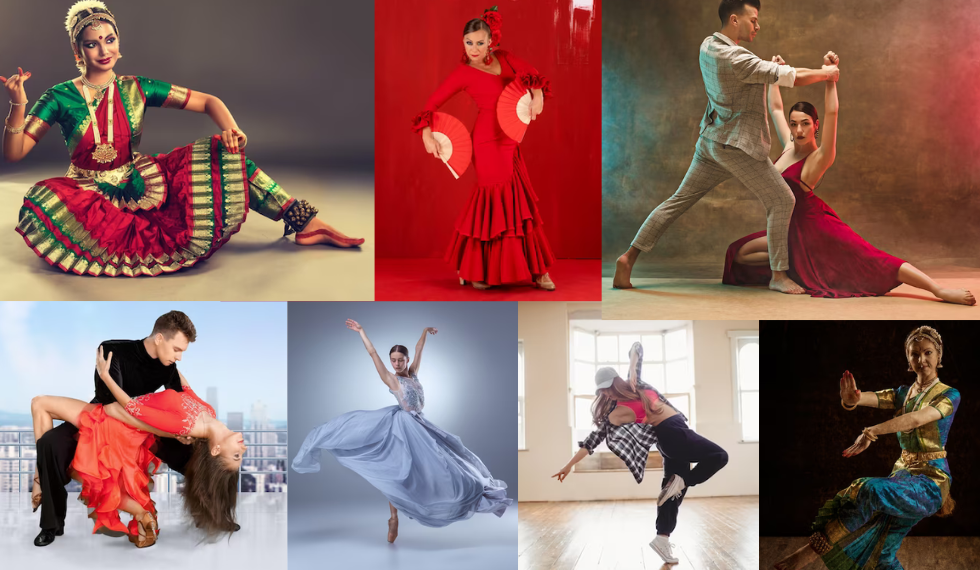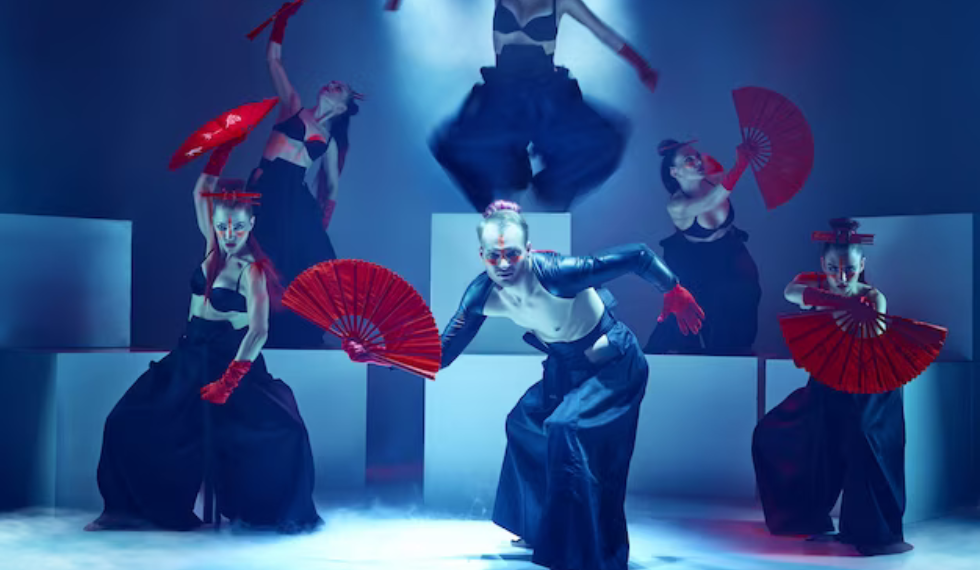Dance has always been a dynamic art form, evolving with time and adapting to the changing tides of culture and society. The birth and growth of dance competitions has been one of the most important developments in the dance world. Dance competitions have become an increasingly popular and important part of the dance community in recent years. They offer dancers a platform to showcase their skills, receive feedback from professional judges, and compete with other dancers from all over the world.
Dance competitions also play a vital role in promoting dance education and appreciation and in helping dancers develop their careers. From the local dance-offs in small-town venues to the glitzy televised extravaganzas, they have evolved significantly over the years. In this article, we will take you through the fascinating evolution of dance competitions and explore their importance in the dance community.
Dance Around the World: A Global Celebration of Movement and Rhythm

Dance is a vibrant tapestry of cultures and styles that have evolved over time, representing the rhythmic heartbeat of humanity’s creative expression. From the rich traditions of African and African-American dance to the elegance of classical ballet, the evocative power of contemporary dance, and the spirited artistry of Indian classical forms, dance has transcended borders and genres.
African and African-American dance, deeply rooted in tradition and communal storytelling, resonates with polyrhythmic beats and profound connections between participants. Its influence has reverberated worldwide, shaping the dance of the African Diaspora, the Americas, and even modern dance.
Classical ballet, with its origins in the grand courts of Europe, employs a precise vocabulary and narrative structure. Over the centuries, it has enraptured audiences with enchanting stories and breathtaking movements, exemplified by its iconic pointe shoes and tutus.
The magic of contemporary dance takes center stage, pushing boundaries, embracing diversity, and blurring lines between genres. This dynamic, often seen in music videos and competitions, merges classical techniques with modern innovation, delivering dramatic and visually stunning performances.
Indian classical dances, including Bharatanatyam, Kathak, Kuchipudi, and Odissi, offer a glimpse into a world of ancient traditions and spiritual narratives. Each form is characterized by intricate gestures, rhythmic footwork, and expressive storytelling through dance and music.
From the sacred Noh theater of Japan to the bold expressions of Butoh, the East offers a fascinating journey into the world of theatrical and experimental dance, bridging the gap between ancient traditions and contemporary artistry.
In the United States, a diverse array of dance styles has emerged, from the elegance of the Foxtrot to the lively Contra Dance and Square Dance. The emotional intensity of Flamenco, the soulful depth of Hip Hop, and the unique blend of Flexing showcase the nation’s cultural diversity and creative dynamism.
Dance transcends language and unites people through the universal language of movement and rhythm. It’s a vibrant tapestry of human expression that weaves stories, emotions, and traditions, creating a global celebration of life and art. Whether you’re a dance aficionado or a casual observer, the world of dance offers a never-ending journey of discovery, expression, and connection.
Dance Evolution: From Television to Viral Sensation
In the realm of dance, two powerful forces have driven its evolution: television and social media. Dance competitions, once confined to local stages, have burst into the global spotlight, transforming the way we experience the art of movement.
Television, with shows like “So You Think You Can Dance” and “Dancing with the Stars,” has played a pivotal role. These programs not only unearth hidden dance talents but also make dance accessible to millions. The glamour, passion, and fierce competition on display have captivated audiences worldwide, turning dancers into household names.
However, the rise of social media has truly ignited a dance revolution. Platforms like Instagram, TikTok, and YouTube have provided a stage for dancers to showcase their talents beyond the confines of TV. Competition performances that once thrilled a local crowd can now go viral, reaching millions in a matter of hours. This digital landscape has democratized dance, allowing emerging talents to shine and inspiring the next generation of performers.
The evolution of dance competitions, fueled by television and propelled by social media for social changes, has made dance a global phenomenon. It’s a testament to the enduring power of movement and rhythm, showcasing the creativity and dedication of dancers from all walks of life. Whether you’re a dancer or a devoted fan, this dance revolution offers an ever-expanding stage for the world to witness the magic of movement.
Dance Competitions Around the World: A Global Evolution

Dance competitions have transcended borders, captivating the hearts of enthusiasts worldwide. This international expansion has sparked a global dance revolution, creating a stage for dancers to showcase their talent on an unprecedented scale.
In this dynamic evolution, international competitions stand at the forefront. Events like the World of Dance Championship and the International Ballet Competition have become cultural touchpoints, bringing together dancers from diverse backgrounds. These competitions celebrate the fusion of traditions, elevating dance to new heights.
What sets this global phenomenon apart is the shifting landscape of judging criteria. Today, the focus extends beyond technical prowess to embrace diversity and inclusivity. Dance competitions are increasingly recognizing the importance of varied styles, backgrounds, and unique artistic expressions. This transformation fosters a more holistic approach, where innovation and individuality take center stage.
For dance lovers, this evolution is an exciting journey. It offers a kaleidoscope of dance styles, cultures, and artistic interpretations. As dance competitions continue to redefine themselves, they create a harmonious platform for dancers to tell their stories, celebrating the beauty of diversity and the universal language of dance.
Dance Competitions: Shaping the Future of Dance Education
Dance competitions have come a long way since their inception. What started as informal gatherings has grown into a global phenomenon, showcasing a dazzling array of styles, from classical ballet to hip hop. Today’s dance competitions are grand spectacles, bringing together talented performers, dedicated instructors, and passionate enthusiasts. They have become a vital component of the dance world, promoting excellence, providing exposure, and nurturing future dance stars.
Influence on Dance Education
Dance education has not remained untouched by the rise of dance competitions. Let’s explore the profound impact they’ve had:
- Skill Development: Dance competitions encourage dancers to refine their technical skills and stage presence. The desire to excel and stand out among competitors pushes individuals to work harder and improve their artistry.
- Exposure and Networking: Competitions often serve as platforms for dancers to gain exposure and make valuable connections in the dance industry. They can lead to opportunities like scholarships, company auditions, or teaching positions.
- Performance Experience: Competing provides invaluable performance experience. It teaches dancers to handle stage pressure, adapt to different environments, and refine their ability to captivate an audience.
- Discipline and Dedication: The competitive nature of these events fosters discipline and dedication. Dancers learn to set goals, practice rigorously, and persevere through setbacks.
Pros of Competition-Focused Training
- Goal-Oriented Learning: Competition-focused training sets clear goals for dancers, motivating them to strive for excellence.
- Performance Confidence: Frequent exposure to competitions builds performance confidence and resilience, making dancers better equipped for professional careers.
- Career Opportunities: Winning or even participating in prestigious competitions can open doors to scholarships, job offers, and artistic opportunities.
Cons of Competition-Focused Training
- Stress and Burnout: The pressure to excel in competitions can lead to stress and, in some cases, burnout among young dancers.
- Neglect of Artistry: Overemphasis on technical perfection may lead to a neglect of artistic expression and creativity.
- Narrow Focus: Competition-focused training may limit a dancer’s exposure to a broad range of dance styles and forms.
Balancing Act
The impact of dance competitions on dance education is undeniable. They offer a platform for skill development, exposure, and networking, providing both opportunities and challenges. The key is to strike a balance. Dancers and educators must ensure that competition-focused training doesn’t overshadow the importance of artistic expression, creativity, and well-rounded dance education.
Conclusion
The journey of dance competitions from local showcases to global phenomena is a testament to the enduring power of this art form. For dance lovers, it’s a heartwarming tale of passion, dedication, and the pursuit of excellence.
As we witness the dazzling performances, the exciting leaps, and the emotional storytelling on stages around the world, we see the unbreakable spirit of dancers and their unyielding commitment to their craft. Dance competitions have become the bridge that connects various cultures, showcasing the universality of movement and rhythm.
For dance lovers, this evolution is a reminder that dance is not just an art; it’s a language of the soul that transcends boundaries and connects people on an emotional level. The future of dance competitions promises even greater fusion and collaboration, where artists from different corners of the world come together to celebrate the beauty of movement. It’s a thrilling time to be a dance lover, as the journey of dance competitions continues to inspire and touch our hearts.
